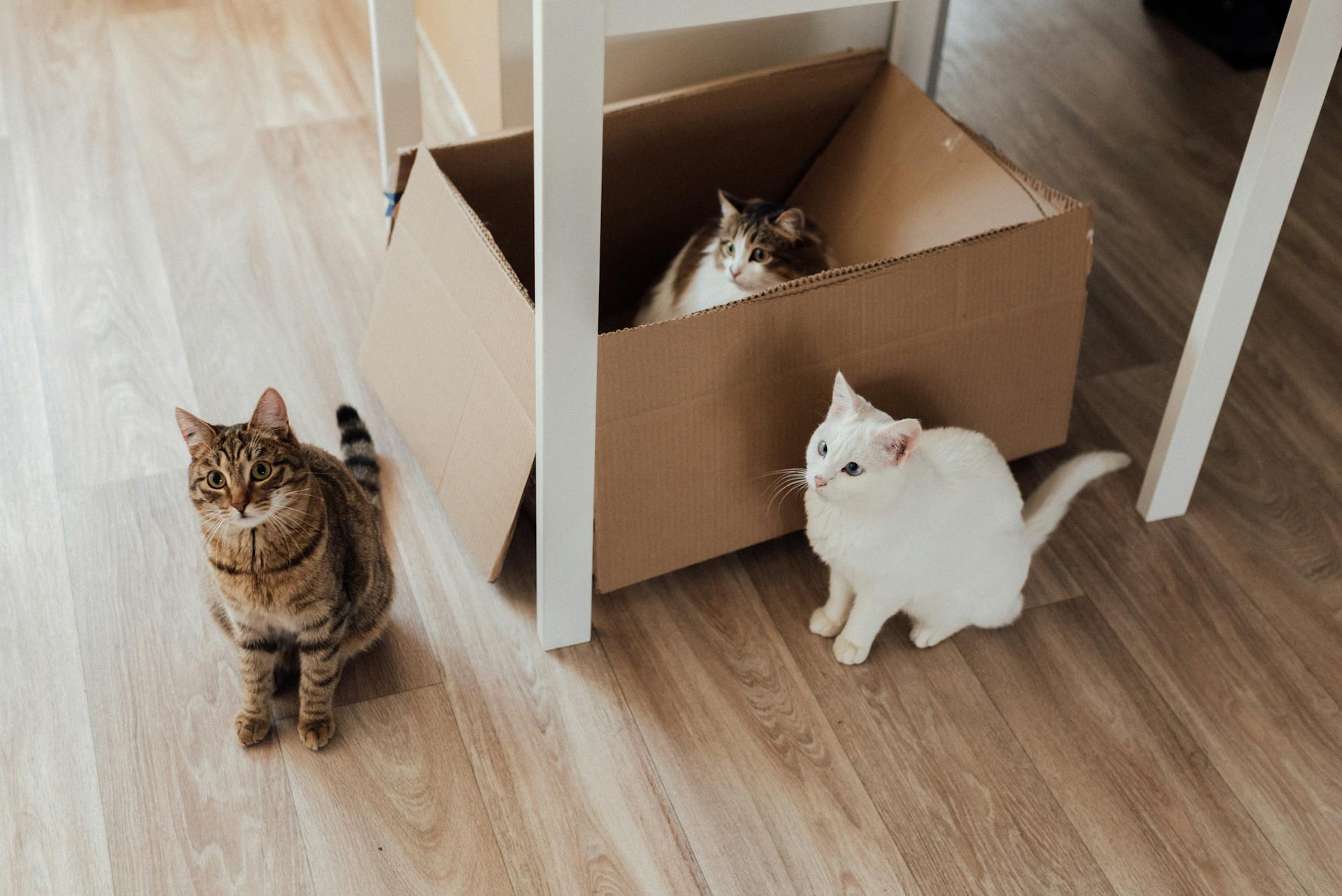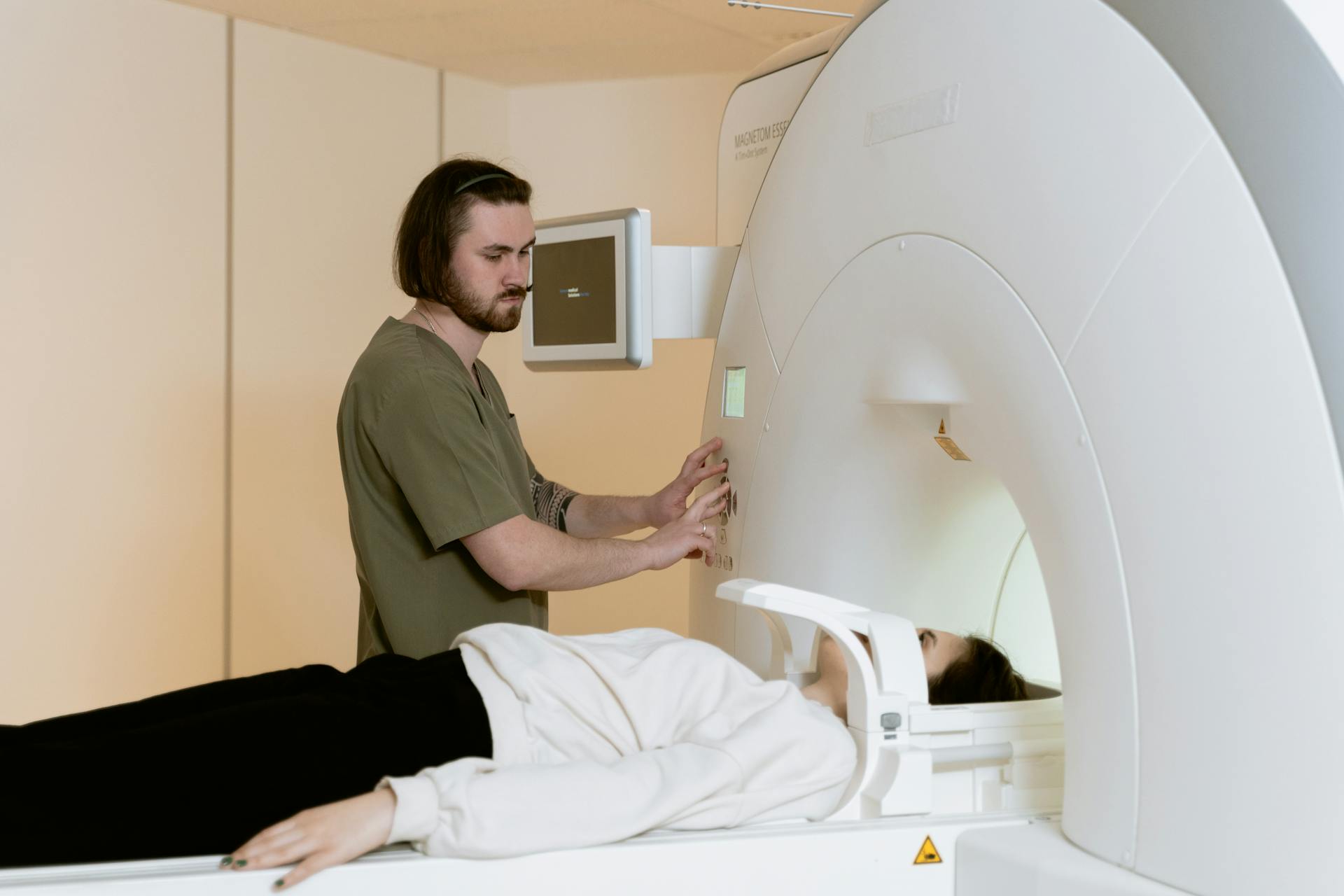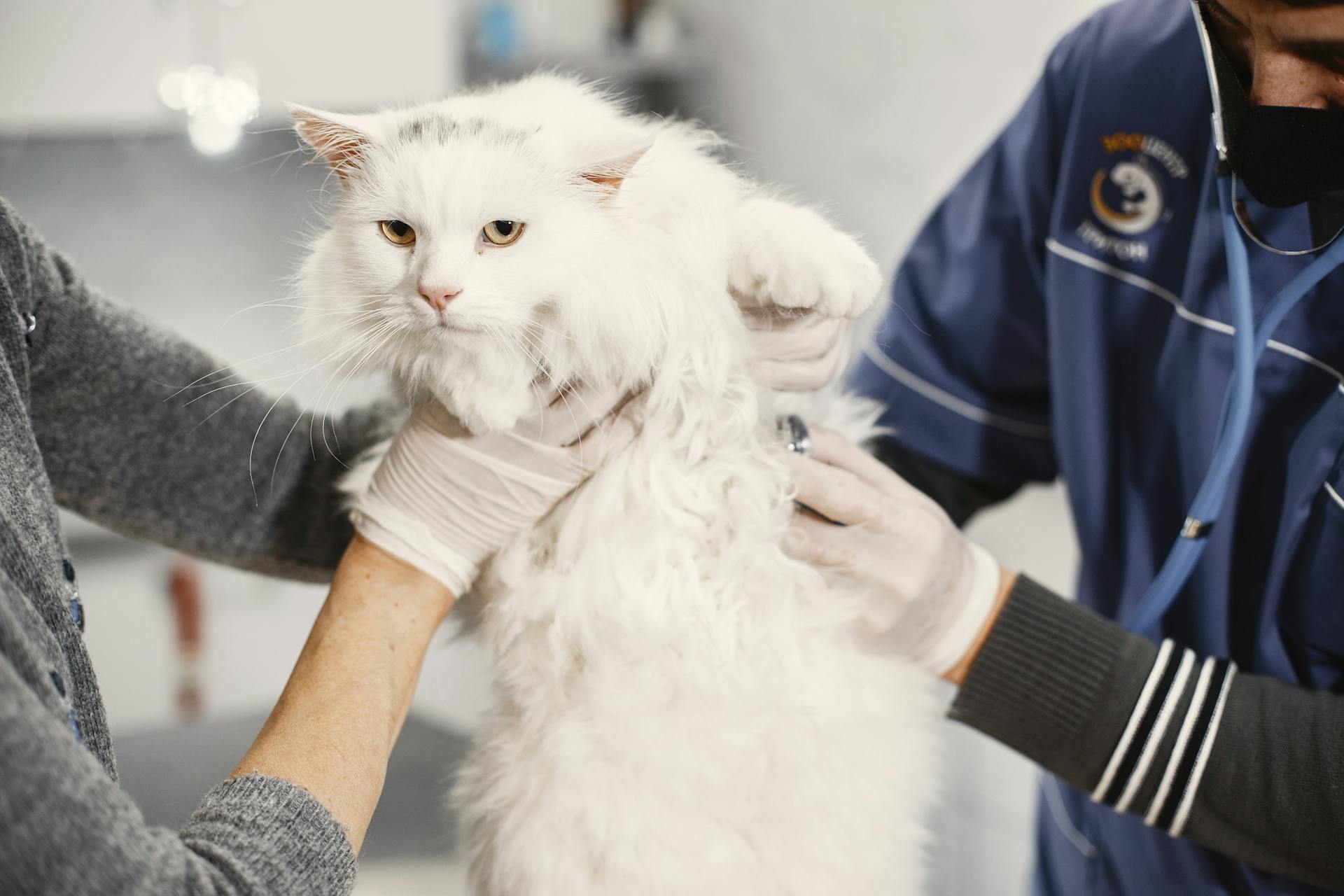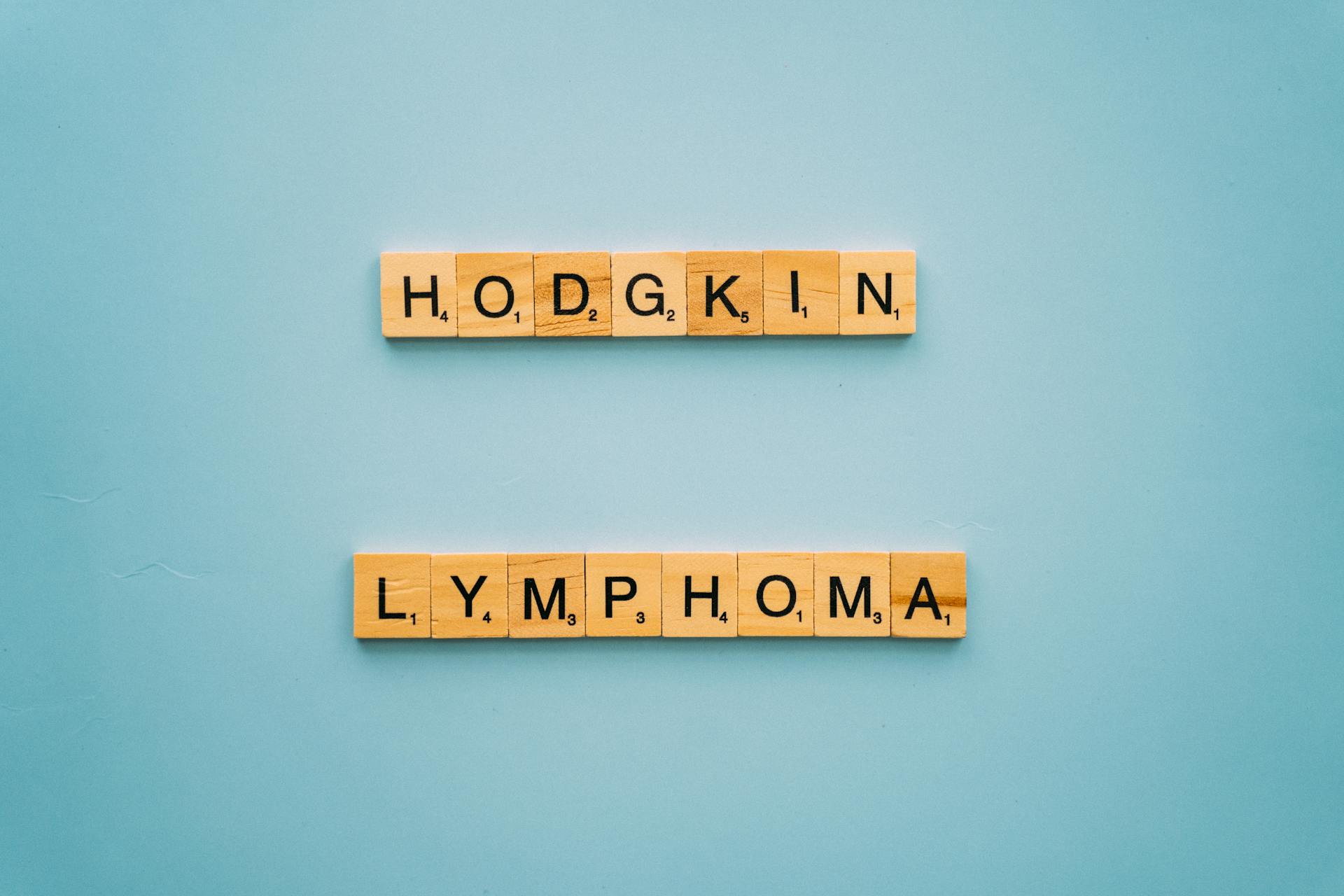
Intestinal lymphoma in cats is a serious health issue that requires prompt attention. It's estimated that about 1 in 100 cats will develop lymphoma, with the intestines being one of the most common sites.
Cats with intestinal lymphoma often have a history of chronic inflammation, which can increase their risk of developing the disease. The exact cause of intestinal lymphoma in cats is still unknown, but it's believed to be related to a combination of genetic and environmental factors.
Symptoms of intestinal lymphoma in cats can be subtle, but common signs include weight loss, vomiting, diarrhea, and lethargy. If you notice any of these symptoms in your cat, it's essential to take them to the vet as soon as possible.
Early detection and treatment are crucial in managing intestinal lymphoma in cats, so don't delay in seeking veterinary care.
What is Lymphoma of the Intestine?
Intestinal lymphoma is a common type of cancer found in cats, particularly those over 9 years of age.
It's most often seen in the GI tract, where it can cause a range of symptoms, including diarrhea, weight loss, and vomiting.
In cats with large-cell intestinal lymphoma, these symptoms can come on very rapidly, in a matter of just days or weeks.
Cats with the small-cell version of the disease will show a much slower onset of symptoms.
X-rays can sometimes help diagnose intestinal lymphoma, but they may not always show obvious masses.
Instead, they can reveal abnormal intestinal patterns, such as radiodense areas with no gas or digesta, which can indicate something is wrong.
Ultrasound can also be used to diagnose intestinal lymphoma, and it can show thickened intestines and a lack of movement, known as ileus.
These changes can occur in both inflammatory bowel disease (IBD) and cancer, so ultrasound is not a definitive diagnosis on its own.
In cats with intestinal lymphoma, the symptoms can be quite severe and can come on very quickly, making it essential to seek veterinary attention if you suspect something is wrong with your cat.
Causes and Risk Factors
The causes and risk factors of intestinal lymphoma in cats are not yet fully understood. Several factors have been implicated as possible causes, but their involvement remains inconclusive.
One of the main challenges in understanding the causes of feline intestinal lymphoma is the relationship between the lymphoma's histological grade and phenotype. This relationship is still not well understood.
The aetiopathogenesis of feline LGAL, which is a type of intestinal lymphoma, is particularly unclear. This means that the exact causes of this disease are still being researched and not yet fully understood.
Researchers are still trying to determine the underlying causes of intestinal lymphoma in cats, and more research is needed to fully understand the disease.
Worth a look: Canine Gastrointestinal Lymphoma
Feline Retroviruses
Feline leukemia virus (FeLV) is a common retrovirus that affects cats, causing a weakened immune system and increased risk of infections.
FeLV is primarily spread through direct contact with an infected cat's saliva, urine, or feces, making multi-cat households and shelters high-risk environments.
Cats with FeLV are more susceptible to other viral infections, such as feline immunodeficiency virus (FIV), which can further compromise their immune system.
FeLV can also be transmitted from mother to kitten during pregnancy or nursing, highlighting the importance of testing pregnant cats for the virus.
The risk of FeLV transmission can be reduced by keeping cats indoors, separating them from other cats, and ensuring they are up-to-date on their vaccinations.
Aetiopathogenesis
The aetiopathogenesis of feline LGAL is poorly understood. Several factors have been implicated as possible causes, but their involvement remains inconclusive.
The relationship between these factors and the AL histological grade and phenotype is particularly unclear. This lack of understanding makes it difficult to pinpoint the exact causes of feline LGAL.
Several factors have been implicated as possible causes, but their involvement remains inconclusive.
Symptoms and Diagnosis
Intestinal lymphoma in cats can be a challenging diagnosis, and it's essential to understand the symptoms and diagnostic process.
Symptoms of intestinal lymphoma in cats include weight loss, vomiting, anorexia, diarrhea, and lethargy. These signs can be similar to those of inflammatory bowel disease (IBD), making diagnosis tricky.
Weight loss is the most common symptom, affecting 80-90% of cats with low-grade alimentary lymphoma (LGAL). Vomiting and anorexia are also common, occurring in 70-80% and 60-70% of cats, respectively.
Diagnosing intestinal lymphoma requires a combination of clinical signs, imaging, and cytology or histology. A biopsy of the intestinal tract is the only sure way to diagnose the condition.
Ultrasound can help measure the thickness of the stomach and intestinal linings, as well as evaluate the size of the lymph nodes around the intestines. However, the findings may not be specific to intestinal lymphoma, and further testing is often necessary.
Cytology and histology can aid in diagnosis, but results may be unreliable, especially for LGAL. Histological examination of the small intestine is essential in establishing a diagnosis of AL.
Here is a summary of the clinical signs of LGAL:
Abdominal palpation can help distinguish LGAL from IBD, but findings may not be reliable. Thickened bowel loops may be identified, but this can also be a non-specific finding.
Diagnostic Tests
To diagnose intestinal lymphoma in cats, a PCR-based lymphocyte clonality assay is used. This test involves extracting genomic DNA from a sample of the cat's tissue.
The DNA is then analyzed for the presence of specific gene rearrangements, such as the feline androgen receptor gene (fAR) and the immunoglobulin heavy chain (IGH-VDJ) gene rearrangements.
The test is carried out in triplicate with positive and negative PCR controls to ensure accurate results.
Endoscopy and Coeliotomy
Endoscopy is a minimally invasive diagnostic tool that allows veterinarians to access the stomach, duodenum, distal ileum, and colon to visualize the mucosa.
Gastrointestinal endoscopy is a valuable tool in feline gastroenterology, enabling experienced endoscopists to reach the proximal jejunum.
However, endoscopy has its limitations, as it can only collect biopsy samples from the mucosa or submucosa, and macroscopic differentiation between inflammatory lesions and lymphocytic-plasmacytic gastritis (LGAL) lesions is not possible.
Mucosal lesions that cannot be identified by ultrasonographic examination may be detected by endoscopy.
The jejunum and the proximal part of the ileum, which are common locations of LGAL, are often inaccessible by endoscopy.
In some cases, exploratory cœliotomy may be a preferable option to endoscopy, as it allows for full-thickness biopsies to be taken from various sites.
Exploratory cœliotomy is a more invasive procedure than endoscopy, but it enables veterinarians to inspect all segments of the gastrointestinal tract and take full-thickness biopsies from the stomach, duodenum, jejunum, and ileum.
Full-thickness biopsies can also be taken from other organs, such as peripheral lymph nodes, liver, and pancreas, if indicated.
Fortunately, exploratory cœliotomy is generally a safe procedure, with post-operative complications being uncommon.
Multiple systematic biopsies of all the digestive areas are recommended, regardless of the biopsy sampling method used, due to the frequent lack of gross changes in LGAL cases.
Lymphocyte Clonality Testing
Lymphocyte clonality testing is a crucial diagnostic tool that helps identify the presence of cancer cells in the body.
To perform this test, a commercial kit is used to extract genomic DNA from a sample of tissue, typically using 5 × 10 cells and 200 μL elution buffer.
The extracted DNA is then analyzed using a NanoDrop 2000c spectrophotometer to determine its concentration and quality.
A threshold of 30 ng/μL is set, with desired 260/280 ratios of 1.8–2.0 and 260/230 ratios above or equal to 2.0–2.2.
The PCR-based lymphocyte clonality assay involves amplifying specific gene fragments, including the feline androgen receptor gene (fAR), immunoglobulin heavy chain (IGH-VDJ) gene rearrangements, and T-cell receptor gamma chain (TRG-VJ) gene rearrangements.
Each PCR reaction is carried out in triplicate, including positive and negative controls.
The PCR products are then size-separated using a QIAxcel Advanced System capillary electrophoresis analyzer.
The presence and size of the obtained PCR products are accurately determined using QIAxcel ScreenGel Software.
Identical PCR triplicates are used to verify the reproducibility of the clonality patterns.
The results are interpreted as described previously, providing valuable insights into the presence of cancer cells in the body.
Distinguishing Lymphoma from Other Conditions
Distinguishing low-grade alimentary lymphoma (LGAL) from inflammatory bowel disease (IBD) can be a challenge, as their clinical presentations overlap.
One way to approach this is by considering the differences in their aetiology. LGAL is a type of cancer, whereas IBD is an inflammatory condition.
A summary of the two conditions is provided in the table below:
Imaging studies can also help distinguish between the two conditions. For example, X-rays can show changes in the intestine pattern, such as radiodense areas, which can indicate the presence of a mass or thickening of the intestinal walls.
Ultrasound can also be useful in diagnosing LGAL, as it can show thickened intestines and a lack of movement (peristalsis), which is known as ileus.
Research and Comparison
Intestinal lymphoma in cats is a relatively rare condition, accounting for only about 1-3% of all feline lymphoma cases.
The most common type of intestinal lymphoma in cats is the multicentric type, which affects multiple parts of the gastrointestinal tract.
This type of lymphoma often presents with non-specific symptoms such as weight loss, vomiting, and diarrhea.
Cats with intestinal lymphoma may also experience abdominal pain and a palpable mass in the abdominal cavity.
The prognosis for cats with intestinal lymphoma is generally poor, with a median survival time of around 4-6 months.
Treatment options for intestinal lymphoma in cats typically involve chemotherapy, radiation therapy, and/or surgery.
The effectiveness of these treatments varies depending on the stage and severity of the disease, as well as the cat's overall health.
Treatment and Management
Intestinal lymphoma in cats requires a multi-faceted approach to manage symptoms and improve quality of life.
Chemotherapy is a common treatment option, often used in combination with other therapies.
Supportive care is crucial, including nutritional support to manage weight loss and maintain a healthy appetite.
Corticosteroids may be prescribed to reduce inflammation and alleviate symptoms.
Expand your knowledge: Lymphoma Cancer in Dogs Signs
Rescue Protocol
If you're dealing with a relapse in LGAL, there are other chemotherapy protocols that can be used, including cyclophosphamide and prednisolone.
One such protocol is the COP protocol, which combines cyclophosphamide, vincristine, and prednisolone, and may be used with or without L-asparaginase and doxorubicin.

Cyclophosphamide can be given orally in a dose of 200-250 mg/m² on days 1 and 3 every two weeks, and prednisolone can be given in a dose of 5 mg every 48 hours.
In one study, seven out of nine cats with relapsed disease responded to a rescue protocol of cyclophosphamide and prednisolone, with a 100% response rate based on resolution of clinical signs and normal abdominal palpation.
However, it's worth noting that there are no studies comparing the outcome of cats with LGAL treated by different rescue protocols, mainly because studies often include all subtypes of AL.
Interestingly, one cat in a study did not respond to a multi-agent protocol, but entered long-term remission with oral administration of prednisolone and chlorambucil, suggesting that LGAL may be sensitive to alkylating agents such as chlorambucil.
2.1 Patient Selection
To be eligible for this study, cats had to have a surgically removable lymphoma mass exclusively present in the gastrointestinal tract, confirmed during the staging process.
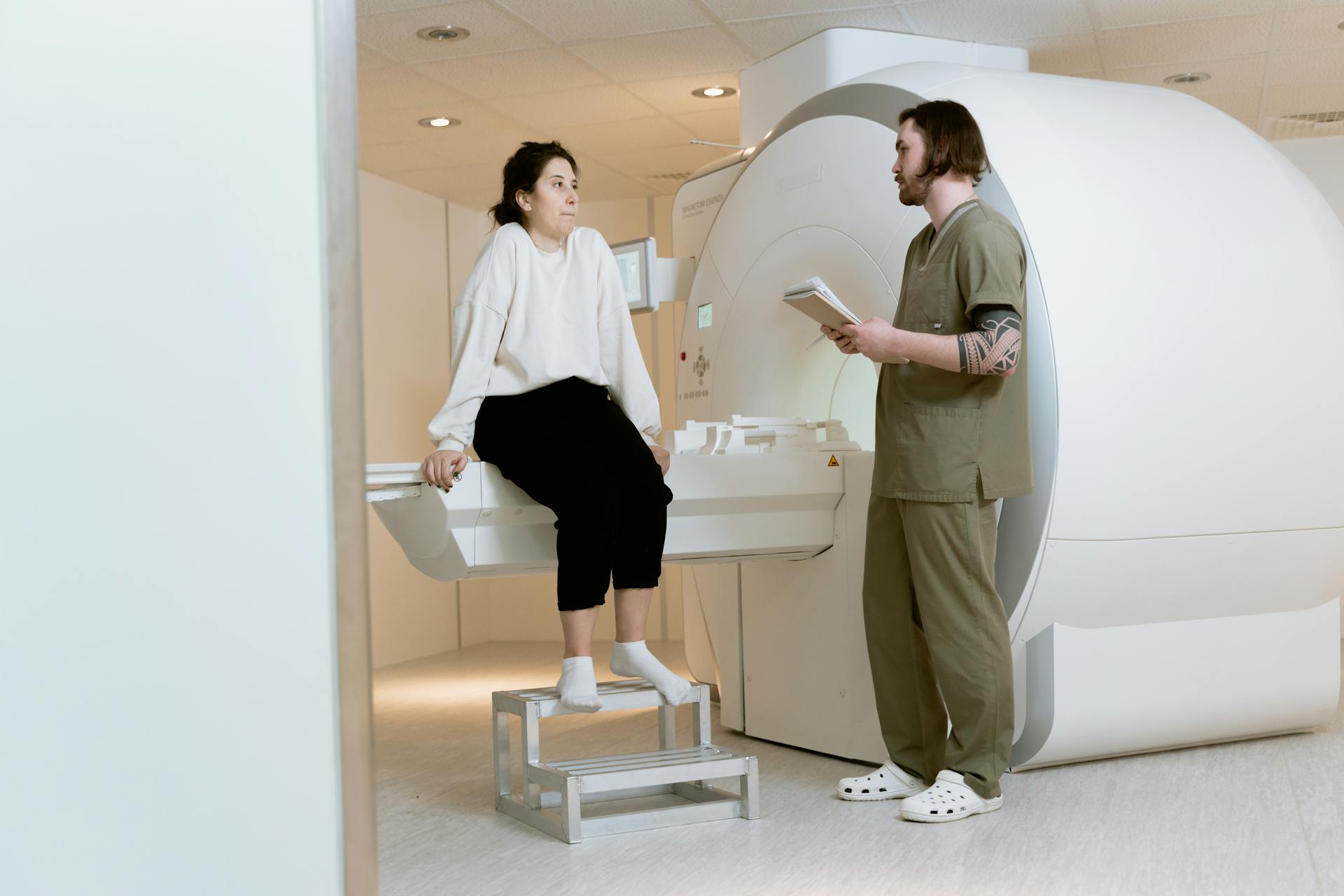
The study only included cats with masses that could be completely removed during surgery.
Initial diagnoses were made through cytologic evaluation of ultrasound-guided fine needle aspiration smears.
These smears were taken from cats presented to the Clinic for Small Animals at the University of Veterinary Medicine, Vienna, Austria, between April 2016 and January 2021.
With informed owner consent, sample material was obtained via surgical procedures.
The 3D size of the material used for the study was documented in centimeters.
General Information
Intestinal lymphoma in cats can be a challenging diagnosis, but understanding the general information can help you navigate the situation.
Most cases of intestinal lymphoma are low-grade, which is a positive sign.
Cats with low-grade intestinal lymphoma have a good chance of going into remission with treatment, with approximately 70% achieving symptom-free status for two to three years.
Treatment for intestinal lymphoma in cats is often effective, but high-grade cases don't respond as well, with only 25-50% of cats achieving remission.
For cats that do go into remission, it's typically short-lived, lasting only two to nine months before symptoms return.
Managing symptoms is key to helping your cat live comfortably for many years.
Frequently Asked Questions
What is the life expectancy of a cat with intestinal lymphoma?
For cats with intestinal lymphoma, life expectancy is typically 60-90 days with prednisone treatment, but better results can be achieved with more comprehensive protocols. Treatment options significantly impact a cat's survival chances.
Is intestinal lymphoma curable in cats?
While intestinal lymphoma in cats is not curable, treatment can induce remission in approximately 70% of cases. Remission is a temporary resolution of symptoms, not a cure, but it can significantly improve a cat's quality of life.
How did my indoor cat get lymphoma?
Indoor cats can still get lymphoma if they're exposed to FeLV or FIV-infected cats or contaminated areas, even if they're not directly exposed to smoke. Understanding the risks and taking preventative measures can help protect your cat's health
What are the symptoms of end stage feline lymphoma?
Common symptoms of end-stage feline lymphoma include loss of appetite, weight loss, diarrhea, vomiting, difficulty breathing, and behavioral changes. If you suspect your cat is showing these signs, consult a veterinarian for proper diagnosis and care
Sources
- https://www.ncbi.nlm.nih.gov/pmc/articles/PMC6180644/
- https://www.clearlakevetclinic.com/site/blog/2024/07/15/differentiating-inflammatory-bowel-disease-intestinal-lymphoma-cats
- https://www.dvm360.com/view/addressing-gastrointestinal-lymphomas-in-felines
- https://www.frontiersin.org/journals/veterinary-science/articles/10.3389/fvets.2024.1378826/full
- http://www.catmd.ca/tigger-1.html
Featured Images: pexels.com
